It can be hard to know exactly what you need or how much money you should spend to get your ideal Zwift setup.
With that in mind, we’ve examined all the options and compiled our guide to the best Zwift setups for every rider and every budget.
We’ve covered everything – from the cheapest Zwift-ready turbo trainer to setting up the ultimate high-end indoor training space.
If you're just getting started, check out our complete guide to Zwift for more on the virtual cycling platform, as well as our round-up of the best smart trainers and best indoor cycling apps.
Why should you use Zwift?
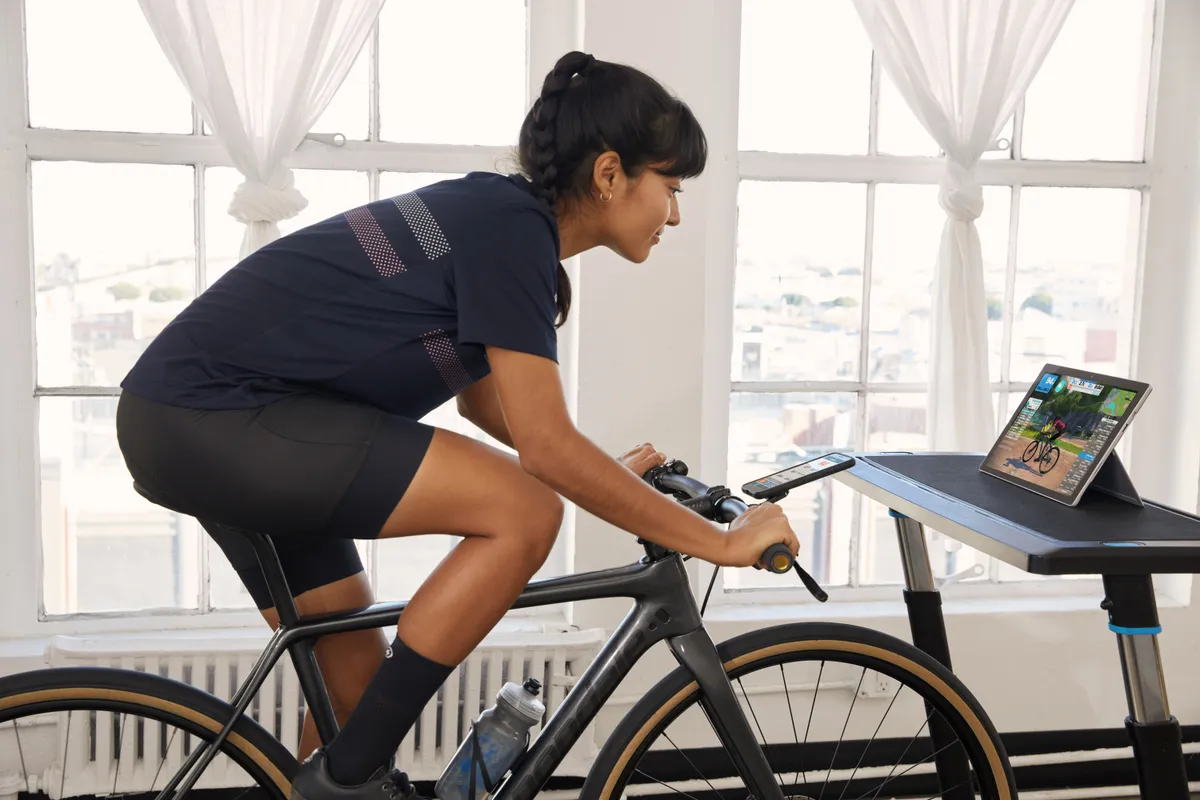
Zwift is a great way to race and train, enabling you to reap the benefits of indoor cycling while having fun – or stoking the competitive fire – along the way. It can be used throughout the year, at any time of the day or night.
It’s an online cycling game with different worlds to ride around, virtual group rides to join, Zwift workouts and training plans to complete, and FTP and ramp tests to benchmark your fitness. There are even Zwift races to be won and lost and the annual Zwift Academy contest for a pro-development team contract.
Zwift is great not just because it takes the boredom out of indoor cycling, but because it’s so feature-rich that it can be considered an ideal complement to riding outside, rather than an alternative.
How to sign up to Zwift
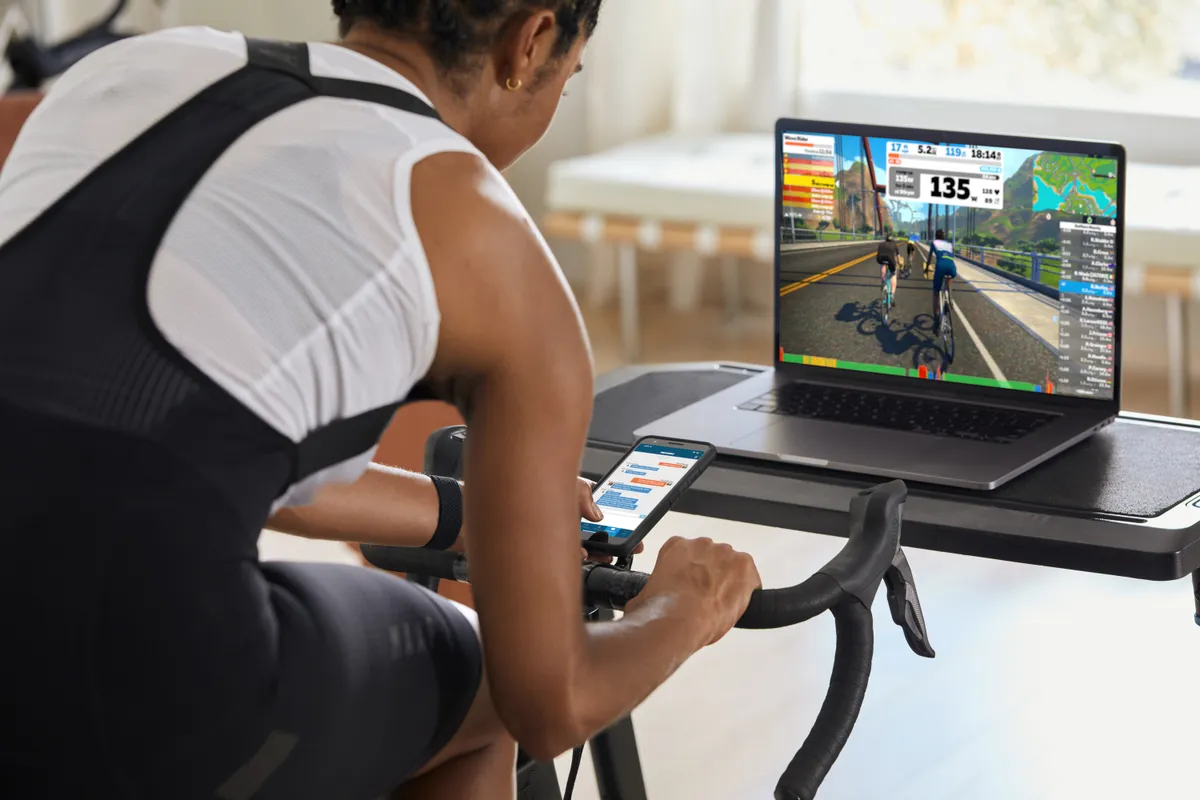
You can sign up to Zwift on a Mac or PC via zwift.com, or on a compatible tablet or mobile device via the Zwift app, which is available through the Apple App Store or Google Play.
Once you’ve created an account, you’ll get a 14-day free trial if you signed up online, or 25km of free riding if you joined via the Apple App Store.
Once that’s finished, you’ll need to sign up for a subscription, which costs $19.99 (plus sales tax), £17.99 or €19.99 per month.
Annual membership costs £179.99 / $199.99 (plus sales tax) / €199.99. New members get 12 months for the price of 10.
Best budget Zwift setup
If you’re on a tight Zwift budget, you’ll need the following equipment to put together the cheapest setup.
- A bike
- A budget indoor trainer
- A compatible computer, smartphone or tablet with Bluetooth or ANT+ (or an ANT+ USB dongle)
Budget smart trainer
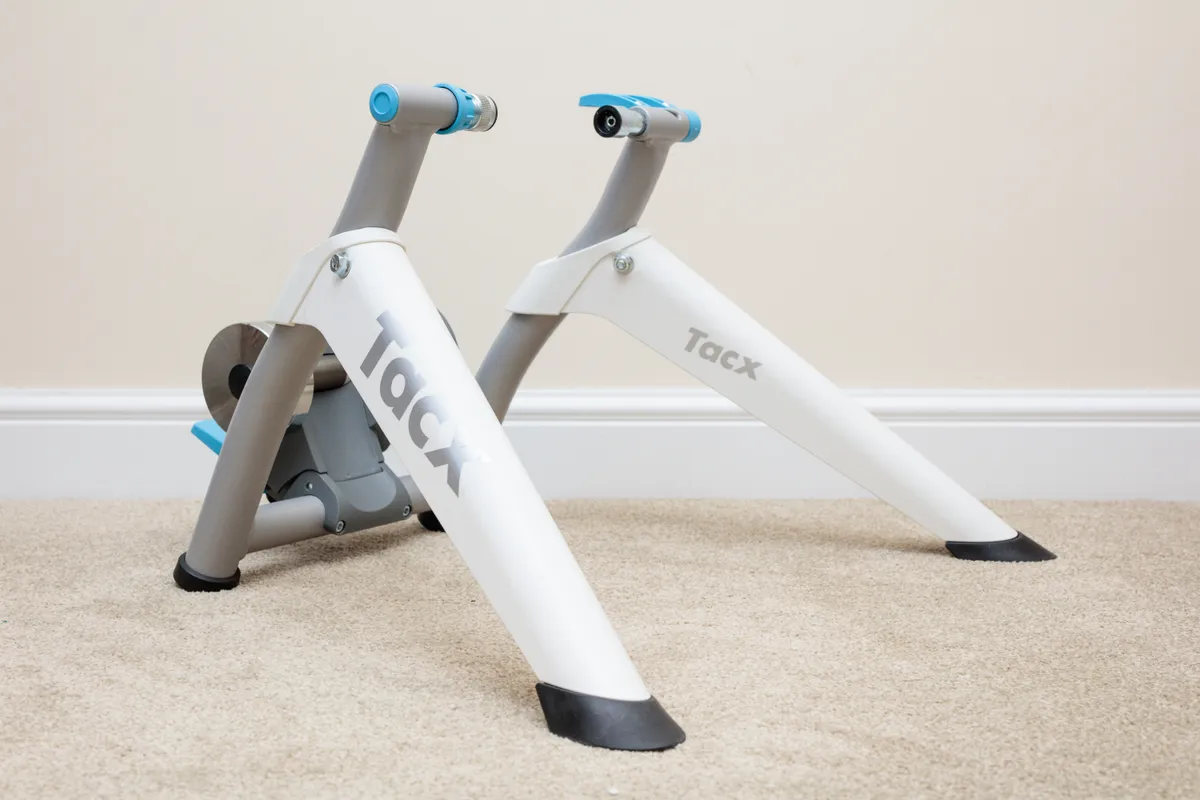
A budget wheel-on smart trainer is the ideal introduction to the immersive experience Zwift offers.
We’d recommend a cheap wheel-on smart trainer over a regular, dumb (i.e. non-smart) turbo trainer.
A smart trainer's variable resistance and power measurement enable you to reap the benefits of Zwift’s virtual worlds and workouts.
You needn’t break the bank to get started.
Though budget options may not, on paper, appear to offer comparable performance to more expensive smart trainers, our testing has shown there are good options for less than £300 / $400 (as tested).
Our pick of the bunch would be the Tacx Flow Smart, which we tested in 2021.
At a penny under £270 / $349 (as tested), it offers a solid spec for beginners, is easy to set up and use, and delivers great performance at a very competitive price.
SQUIRREL_13124169

The Wahoo Kickr Snap – which we tested way back in 2017, awarding it four stars – is another option worth considering, especially given its RRP has dropped to only £299.99 / $399.99.
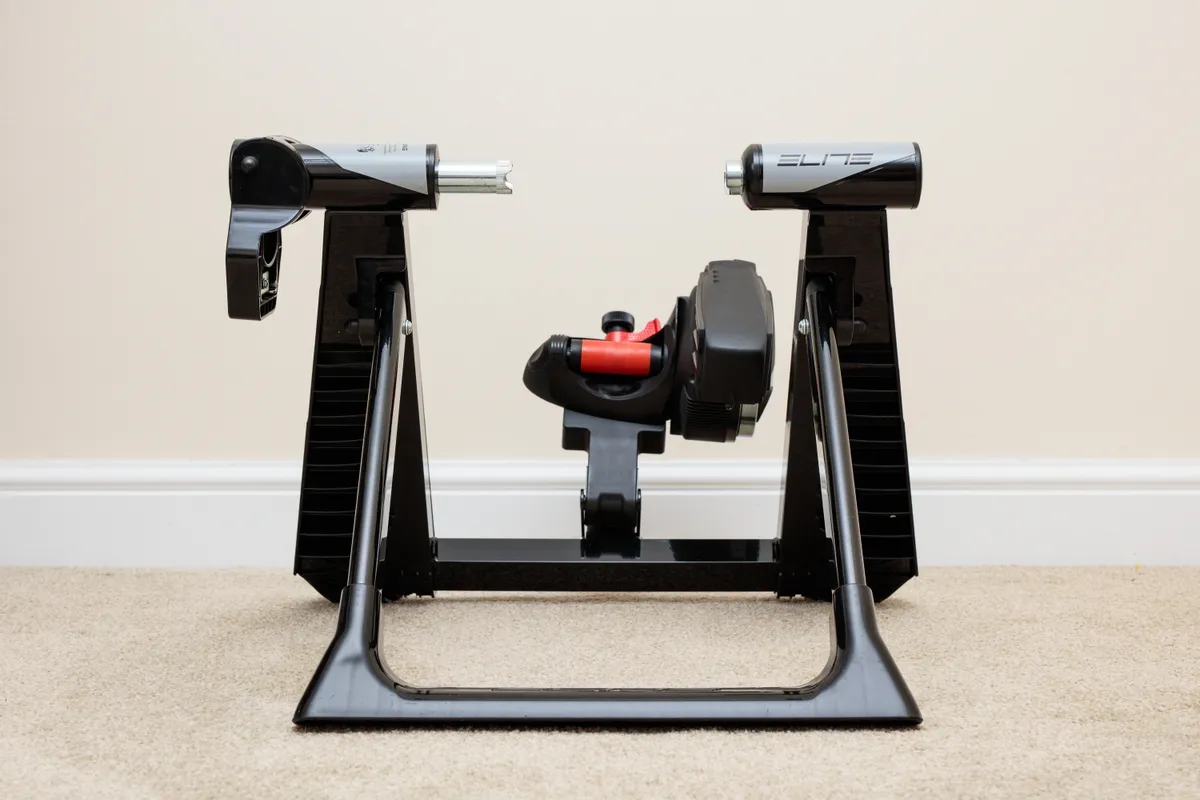
Alternatively, an even cheaper option is the Elite Novo Smart (£259 / $350 as tested).
While its construction quality doesn’t quite stand up to that of the Tacx Flow Smart, and it has a lower maximum power output (660 watts versus the Tacx Flow Smart's 800 watts), it nevertheless takes full advantage of all of Zwift’s immersive features.
Both the Tacx Flow Smart and Elite Novo Smart offer claimed power accuracy of +/- 5 per cent.
As you spend more, the power accuracy of a smart trainer will improve. While that may be important if you're embarking on serious training or virtual racing, for riders on a budget wanting to explore Zwift's features, the accuracy on offer here is absolutely fine.
It’s also worth noting that, while both of these trainers can technically only simulate gradients up to 6 per cent, Zwift’s default trainer difficulty is set at 50 per cent, meaning you won’t max out the trainer’s resistance until you hit a 12 per cent gradient in the game.
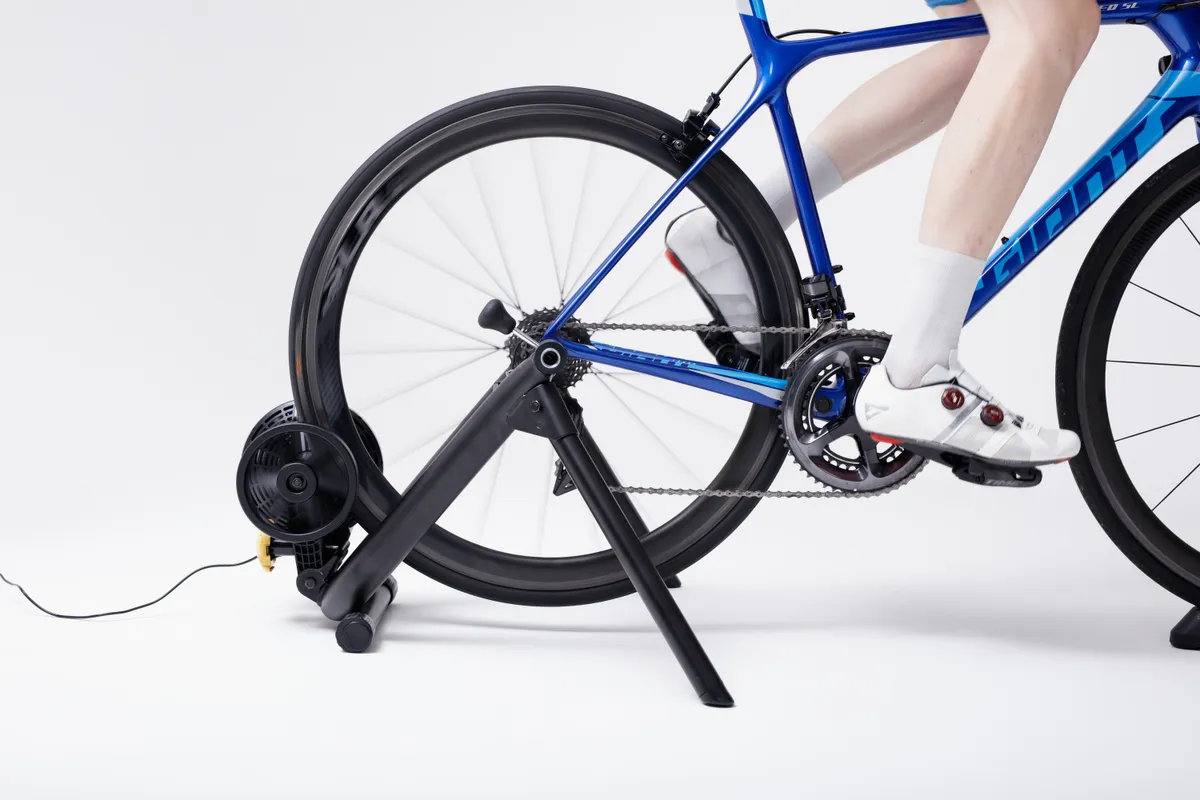
Although it's getting a bit long in the tooth, if you've got a bit more to spend, our current favourite mid-range wheel-on smart trainer is the Saris M2 (£499 / $549.99 as tested).
It has a claimed power accuracy of +/- 5 per cent but, in practice, our tester found it generally kept within 3 per cent of his Garmin Vector 3 power meter pedals.
However, as we'll come on to, at this price there's now a growing range of budget direct-drive smart trainer options and that's where we'd recommend most riders spend their money.
SQUIRREL_13110463
Cheapest Zwift trainer and speed/cadence sensor
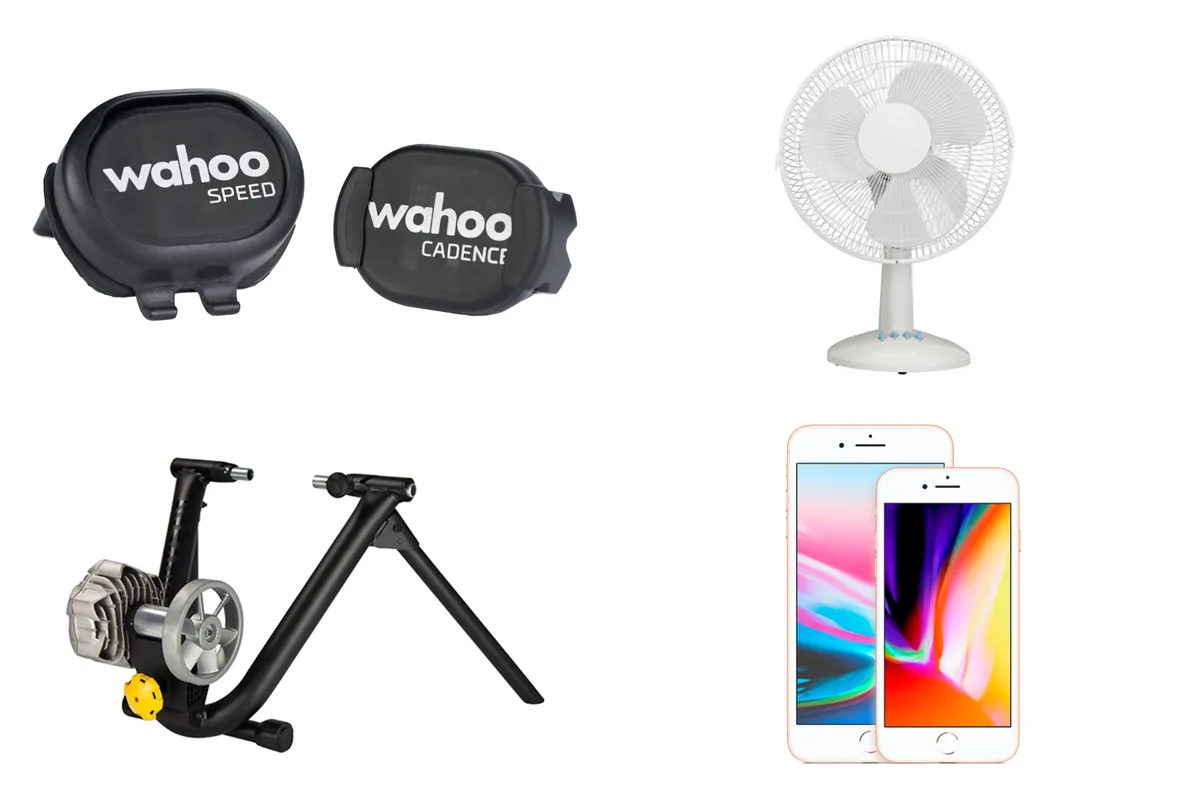
We'd recommend starting with a wheel-on smart trainer if you're on a budget, as detailed above, but any standard, non-smart turbo trainer can be used with Zwift, as long as you have a few accessories.
The cheapest Zwift trainer, therefore, might be the one you already have.
If you own an ANT+ or Bluetooth-compatible measurement tool, such as a modern power meter, Zwift can use the data from that device to power your on-screen avatar.
Of course, this means missing out on things such as simulated gradient changes, drafting and ERG mode, but it’s a workable option in a pinch.
It is worth noting that if you’re using an iOS device, connecting via Bluetooth is your only option at this point.
Those without a power-measurement tool will need a speed/cadence measurement device instead.
Something such as Wahoo’s RPM Speed and Cadence Cycle Sensors is what you’re looking for, but any Bluetooth or ANT+ speed sensor should work.
SQUIRREL_13123152
If you're just using a speed/cadence sensor and a non-smart trainer or rollers, Zwift has two methods of calculating virtual watts.
The first way is for Zwift to use the known power curve of your turbo trainer.
If you own a trainer that Zwift has tested (the full list of compatible trainers can be found on Zwift’s website), this can be a fairly accurate way of measuring power, but your in-game wattage will be capped at 1,200 watts.
If you have an unsupported trainer, Zwift will try to make a rough calculation based on your wheel speed. Realistically, this is a last-ditch option, so don’t expect the numbers to be particularly accurate. Your in-game wattage will also be capped at 400 watts, so this isn’t a long-term solution for many.
Finally, you might also consider a trainer-specific tyre for use with a wheel-on trainer, but you’ll ideally need a spare wheel to put this on because swapping tyres every time you want to use the trainer isn’t practical.
SQUIRREL_13123147
Essential accessories
In terms of accessories, you’ll also need some kind of stand for your phone, tablet or computer – but you can just as easily make do with a few boxes stacked on top of a chair or stool, if that’s all you have available.
Finally, you’re going to need a fan. A cheap but powerful option such as the aptly named Honeywell Turbo Fan from Amazon will work fine, if you can get it in the right position.
SQUIRREL_13124187
Best mid-range Zwift setup
If you have a bit more to spend, you'll have the option of a budget direct-drive smart trainer. Combined with a few accessories that help improve the quality of the Zwift experience, this is where most riders will see the best bang for their buck.
- Budget direct-drive smart trainer
- Turbo trainer table or tablet/phone stand
Budget direct-drive smart trainer
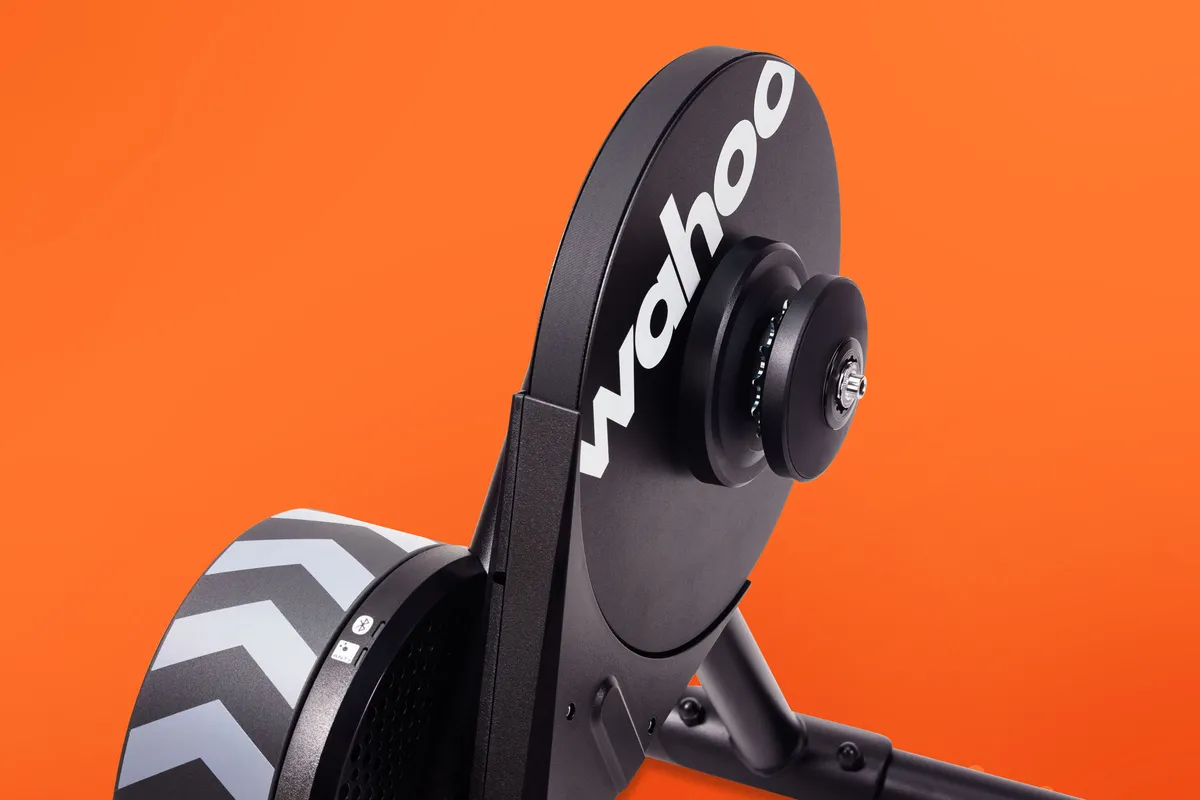
Good-quality direct-drive smart trainers are more competitively priced than ever.
With a direct-drive trainer, you remove the rear wheel and connect your bike directly to the trainer.
The advantage of this is there’s no wear on your rear tyre.
The best examples offer better power accuracy, quieter running and more realistic ride feel than a wheel-on trainer – usually thanks to having a larger flywheel.
They’re also generally able to simulate steeper gradients and offer better support for higher-wattage outputs because there’s no risk of the tyre slipping on the trainer during sprint efforts.
As a result, if you can afford it, we'd typically recommend a budget direct-drive trainer over a mid-range wheel-on trainer.
For £449.99 / $499.99 / €499.99 (as tested), the Wahoo Kickr Core Zwift One is one of the best budget direct-drive smart trainers available.
It offers great ride feel, high accuracy and is very quiet. You can buy the trainer bundled with a year's Zwift subscription for £579.99 / $649.99 / €649.99 (as tested).
In addition, the trainer incorporates the Zwift Cog single rear sprocket, which is used with the Zwift Click bar-mounted controller to provide virtual gear changing, so there's no need for a cassette or to use your bike's gears.
It offers a maximum power of 1,800 watts, claimed power accuracy of +/- 2 per cent and a maximum gradient simulation of 16 per cent.
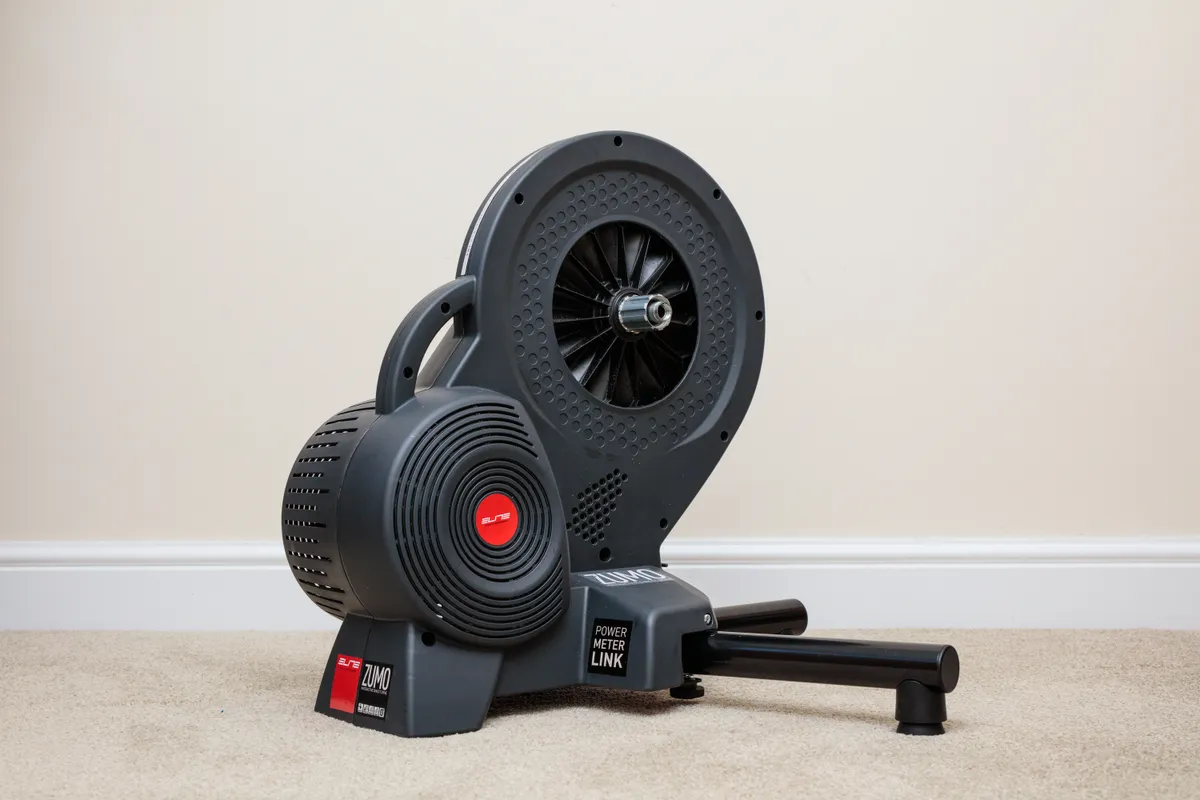
The Elite Zumo comes in at the same price and is also well worth considering.
The specs aren't as good on paper (1,350 watts maximum power, +/- 3 per cent accuracy and 12 per cent gradient simulation), but it'll fit the bill for most everyday riders with a mid-range budget and is often discounted.
Fine-tuning your setup
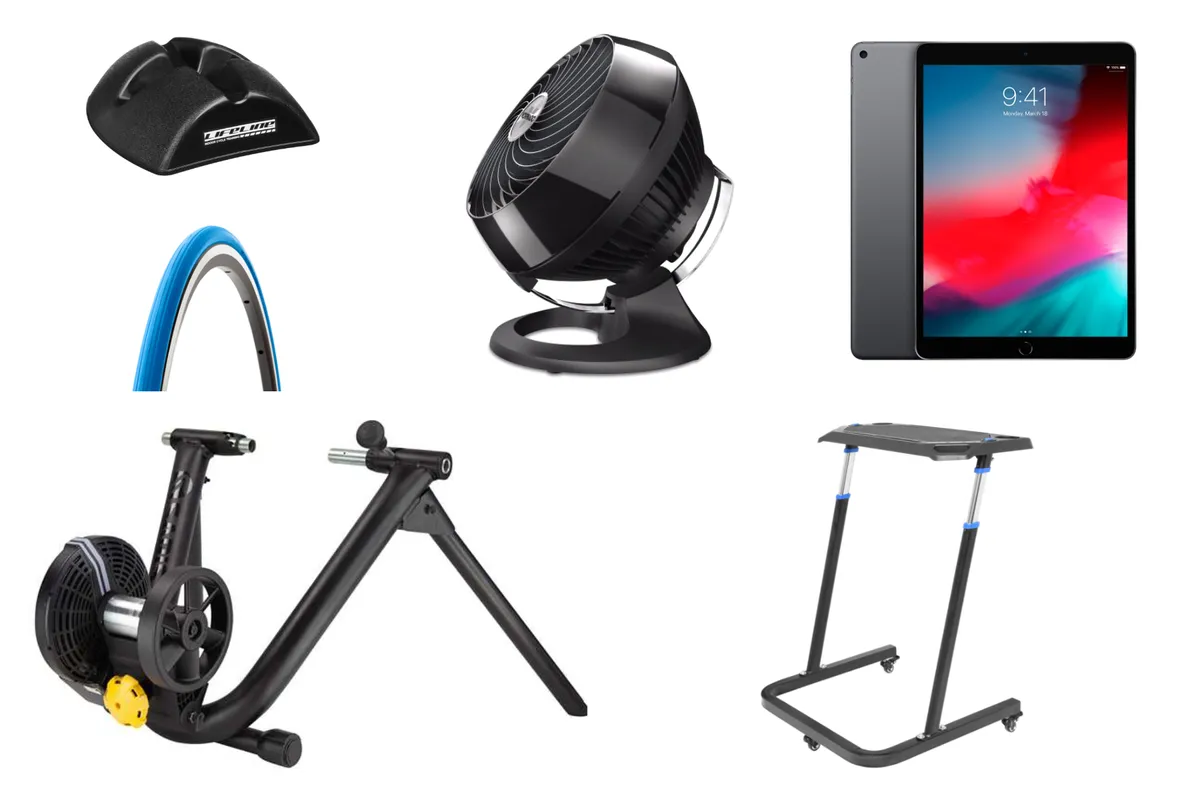
A dedicated trainer table with extendable legs will help you easily get your laptop or tablet at eye level. It's also a convenient place to put your phone and spare water bottle.
You may need a riser block for your front wheel too, if the trainer you purchase doesn’t come with one. This levels out the bike and holds the front wheel in place for better stability.
However, some of the latest smart trainers, including the Wahoo Kickr Core, have a level axle height, so a riser isn't needed to bring your bike's angle back to 'normal'.
SQUIRREL_13118520
If you’re buying a direct-drive trainer, you may also need to buy a cassette (some trainers include one, but many don’t, so factor this – and the availability of a spare cassette – into your budget). The Kickr Core Zwift One has an advantage here.
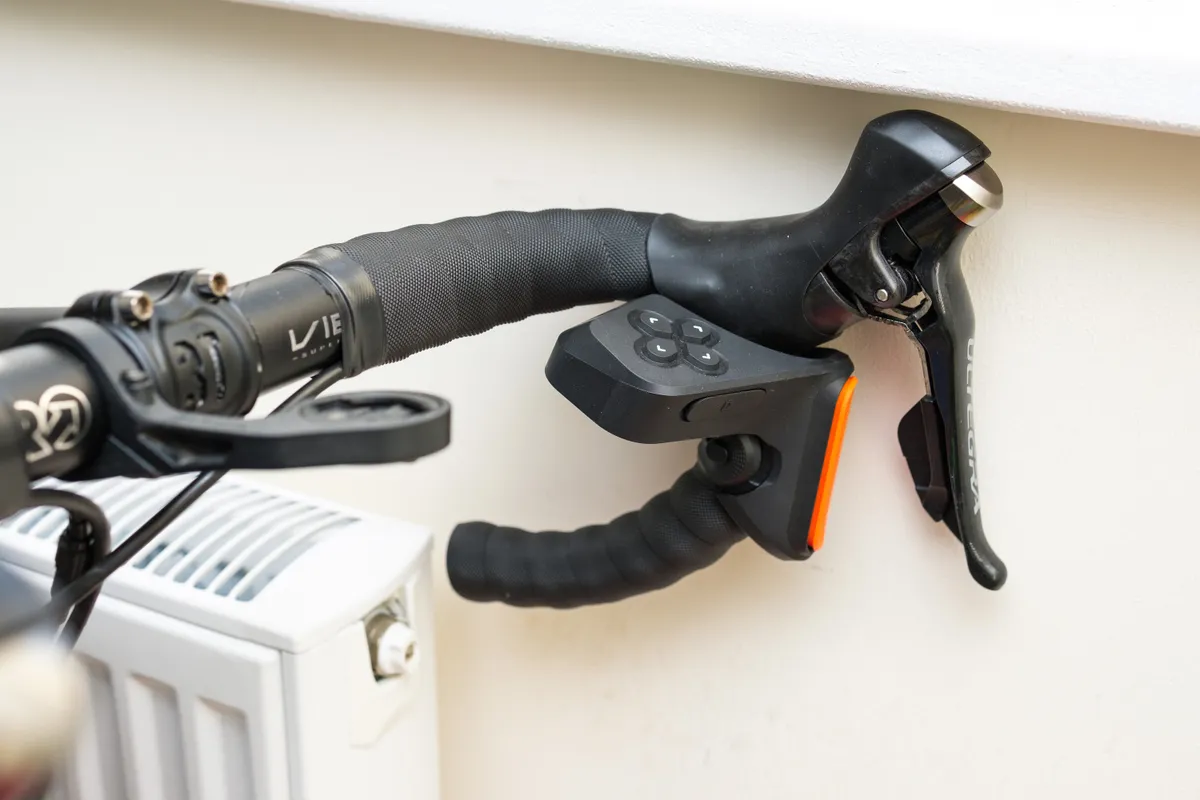
Another nice upgrade if you're using the Zwift Cog is the Zwift Play controller.
This consists of a pair of virtual shifters that hook over drop bars and replace the Zwift Click and control console. These enable you to control the Zwift app from your bars rather than needing to interact with a smartphone, computer, tablet or other device while riding.
Finally, if you’ve got a little bit more money to spend, it’s worth investing in a slightly more powerful fan than recommended in our budget setup to help keep you cool and comfortable.
Best high-end Zwift setup
Here, the market is dominated by high-spec direct-drive smart trainers.
- High-end direct-drive smart trainer
- Apple TV or powerful tablet/laptop with HDMI connection
- Indoor-training specific fan
High-end direct-drive smart trainer
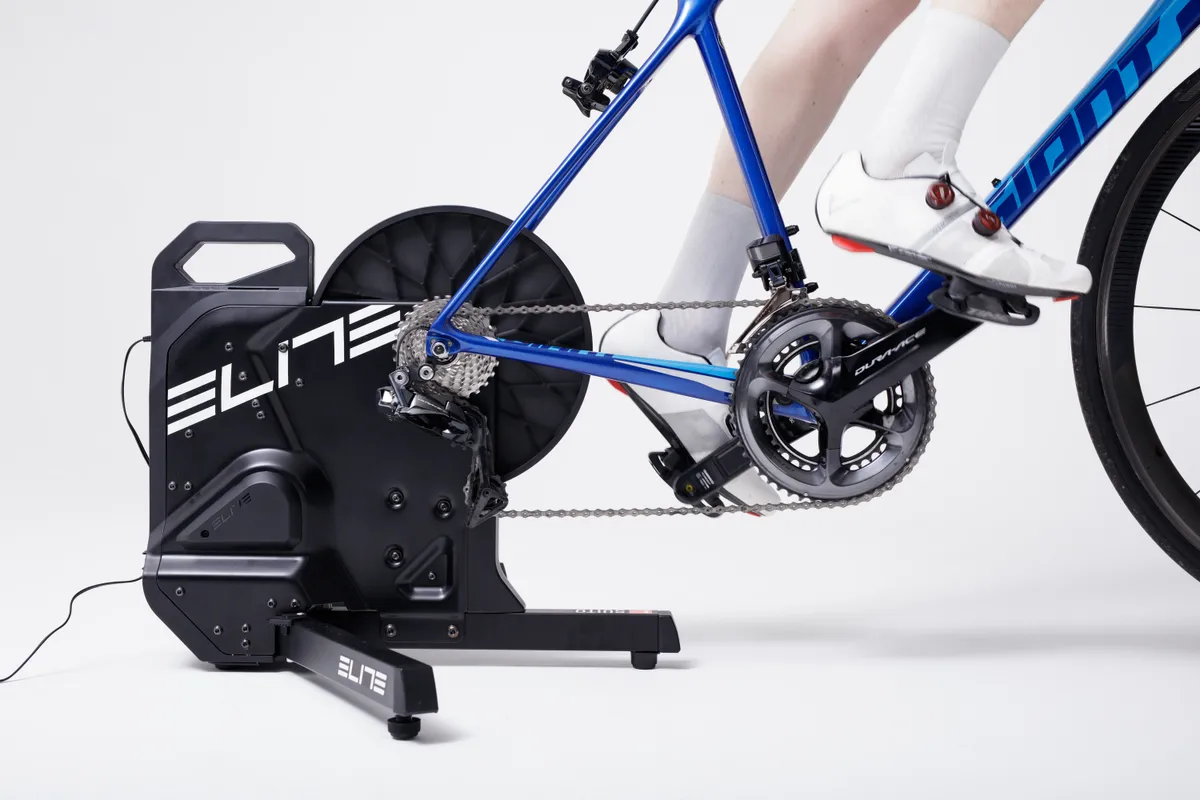
As you spend more and move into the world of high-end direct-drive smart trainers, the resistance ceiling, gradient simulation, power accuracy and ride feel will often improve.
However, given the quality of the latest budget smart trainers, some of the improvements in this price bracket are marginal unless you're a dedicated indoor training or Zwift racing enthusiast.
At an RRP of £650 / $799 (as tested), the Elite Suito ups maximum power to 1,900 watts and, as a bonus over more budget direct-drive trainers, has collapsible legs, making it a fairly compact option for home storage.
The specs of the Elite Suito might not match up to even more expensive competitors on paper, which we'll come on to next, but they both offer more than enough power and resistance for the vast majority of riders.
SQUIRREL_13079962
Zwift in HD
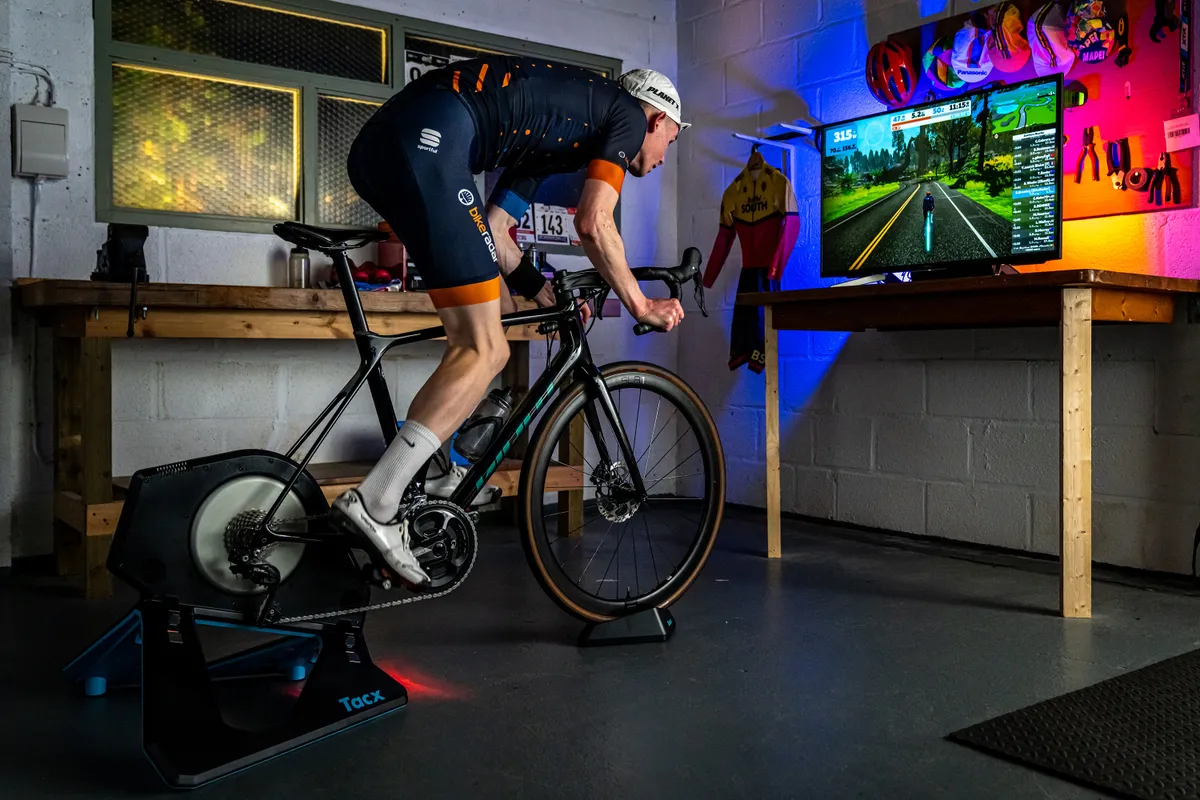
At this level, you may even want to consider using Zwift on a TV, so you can really enjoy the virtual worlds in all their glory.
You could connect a laptop or tablet to your TV via an HDMI cable, but the easiest and possibly most cost-efficient way (if you don’t already own a suitable laptop or tablet) is to use Apple TV 4k because there’s a dedicated app for that platform.
In terms of top-end fans, the Wahoo Kickr Headwind can simulate a headwind of up to 38mph / 48kph, with the fan speed controlled by your effort level – which can be measured in speed, power or heart rate.
SQUIRREL_13087065
Ultimate Zwift setup
If money is truly no object, there’s another tier of Zwift setup you can reach.
- Top-end direct-drive smart trainer or a smart indoor bike
- Accessories that create a more immersive experience
- Projector and cinema screen
At this level, you will need to have deep pockets because costs can spiral out of control very quickly.
But, if you take your Zwifting seriously and you’ve got the cash to spend, why not treat yourself to the ultimate Zwift setup?
Flagship smart trainer
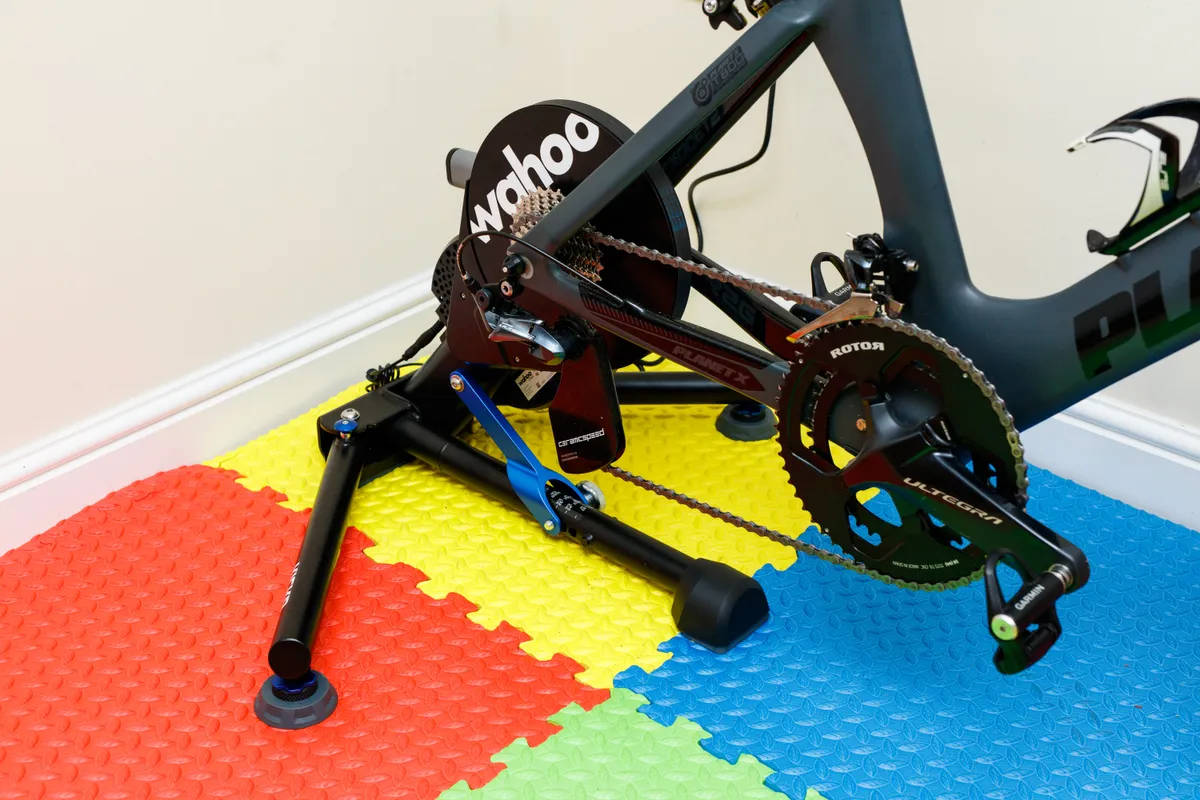
The Wahoo Kickr V6 (£1,099.99 / $1,299.99 as tested) is one of the best direct-drive smart trainers we have tested.
While it isn't quite as fully featured as the Tacx Neo 2T Smart (£1,200 / $1,399.99 as tested), it has an excellent ride feel, thanks to its virtual flywheel, and great power accuracy. WiFi connectivity also makes it very easy to set up.
Speaking of the Tacx Neo 2T Smart, this is one of the most expensive smart trainers on the market.
However, that's reflected in the top-end specs, with claimed power accuracy of +/- 1 per cent, a maximum power output of 2,200 watts and gradient simulation up to 25 per cent. It's also a super-stable unit with a superb ride feel.
SQUIRREL_13076896
The Elite Direto XR (£824.99 / $949.99 as tested) is another fully featured, high-end smart trainer that also works perfectly with accessories such as Elite’s Sterzo Smart steering block.
It's a good option for a high-end smart trainer that won't break the bank compared to some of its competitors in this tier.
SQUIRREL_13079943
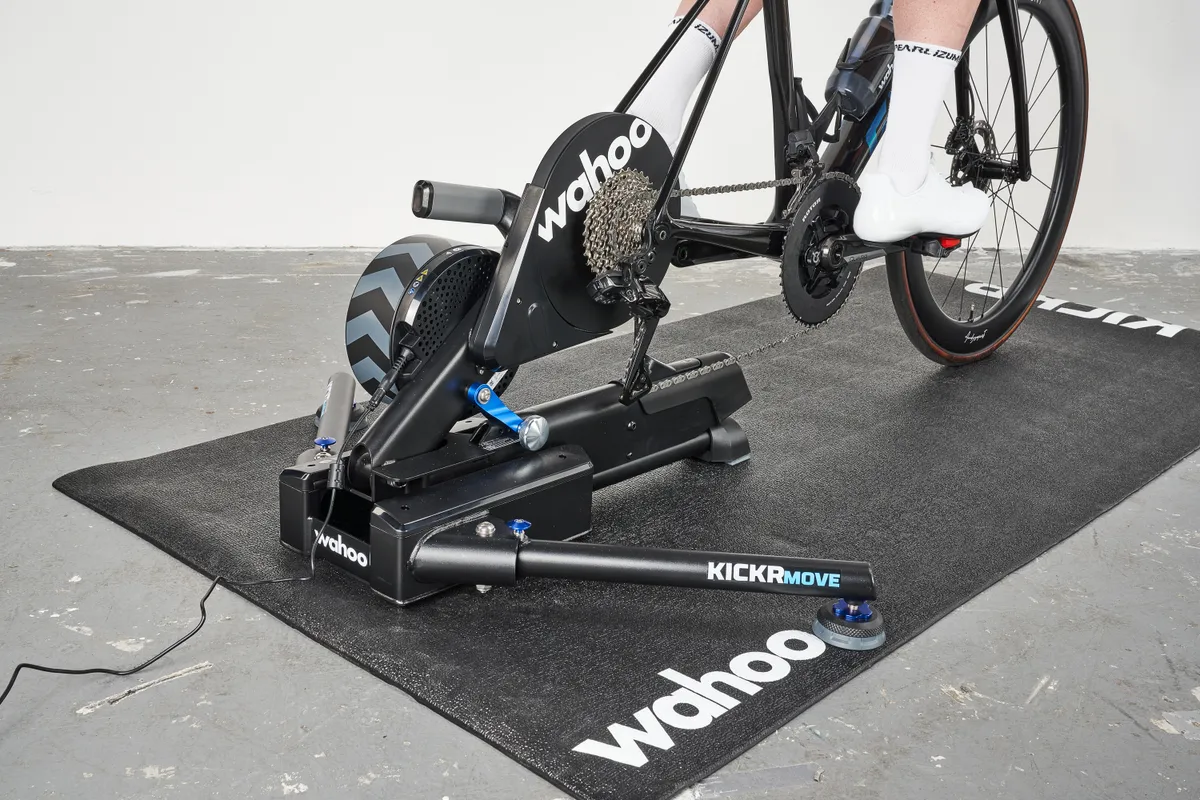
Some top-end models, such as the Wahoo Kickr Move and Tacx Neo 3M, provide forward and backward movement as you change speed, in addition to side-to-side motion, for what's claimed to be an even more realistic ride feel.
Indoor bikes for Zwift

If you’re able (and willing) to spend even more, you may want to consider a dedicated smart indoor bike.
They're usually significantly more expensive than a turbo and heavy, so you need a dedicated indoor space. But Zwift's own Zwift Ride offers a more affordable solution. Being modular, it's also easier to move and store.
The Zwift Ride Frame (£749.99 / $799.99 / €799.99) links up to a direct-drive turbo trainer, converting it to a smart bike.
As of October 2024, it's compatible with seven turbo trainers from Wahoo, JetBlack, Elite, Van Rysel and Zwift (Zwift maintains a full list of compatible smart trainers on its website).
It can also be bought with the Kickr Core as a package for £1,199.99 / $1,299.99 / €1,299.99.

Other smart bike options include the Wattbike Atom, Wahoo Kickr Bike and Tacx Neo Bike Plus, but these are all monolithic rather than modular like the Zwift Ride setup.
These are also halo products and will likely be out of reach for most people. However, they have some key specs that differentiate them from even the best smart trainers – if your budget stretches this far.
Bike fit and crank length are usually highly adjustable, for example, and many models enable you to customise shifting and even chainring or cassette profiles.
They're often claimed to offer a better ride feel and power accuracy, have support for higher maximum power outputs, and can also offer even greater degrees of gradient and descent simulations.
An obvious drawback, aside from the price (which extends well into four figures) of these indoor bikes is they can’t be folded away for easy storage, so you really need a dedicated space to train.
Cinematic experience
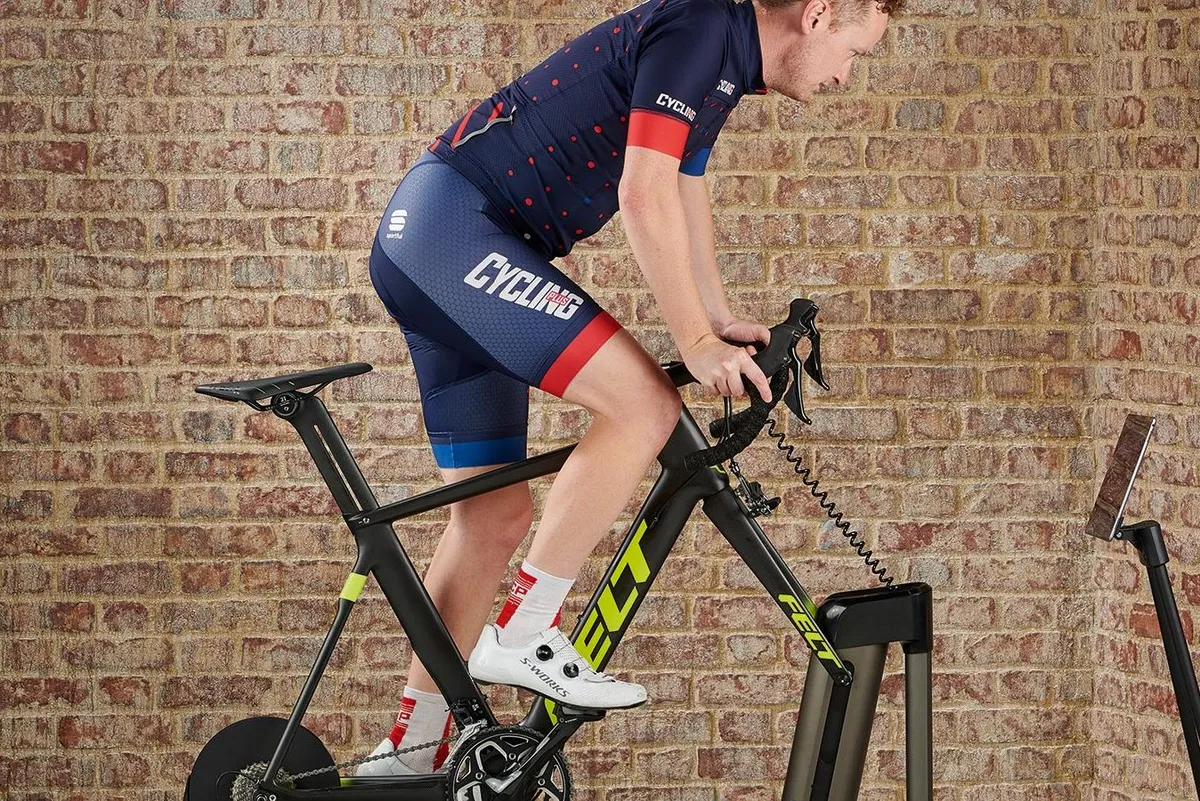
In terms of other equipment, everything else from the top tier applies here, unless you find a TV is too small for your ultimate training space and want to consider a projector and cinema screen to create the truly ultimate experience.
Wahoo users can also make use of the Kickr Climb, which attaches to the bike’s front dropouts and simulates climbs of up to 20 per cent and descents of -10 per cent, for a more immersive experience.
You might even decide you want some indoor-specific cycling kit, from the likes of NoPinz, Le Col, Rapha and Madison.
Sure, your normal cycling kit will do the job, but when we’re talking about the ultimate Zwift setup, no stone should be left unturned.
The benefits over a top-end setup will probably only be marginal, but marginal gains are gains nevertheless if you have the budget and are looking to squeeze out every last watt from your sessions.
Best MTB setup for Zwift
Zwift isn’t just for roadies, so if you’re a mountain biker there’s no reason you can’t join in the fun as well. You might call it the mountain biker’s dirty secret.
This is the best mountain bike setup for Zwift:
- Direct-drive smart trainer
- Compatible freehub or cassette
- Steering platform

Direct-drive smart trainer
The mechanics of using a mountain bike on Zwift are essentially the same as a road bike.
If you have a wheel-on trainer, you’ll need to check the trainer is compatible with the size of tyre you’re using. There are also turbo-trainer tyres available for mountain bike wheels, if you want the quietest, most stable ride possible with these types of trainers.
As with road bikes, direct-drive smart trainers are generally better though, if your budget can stretch.
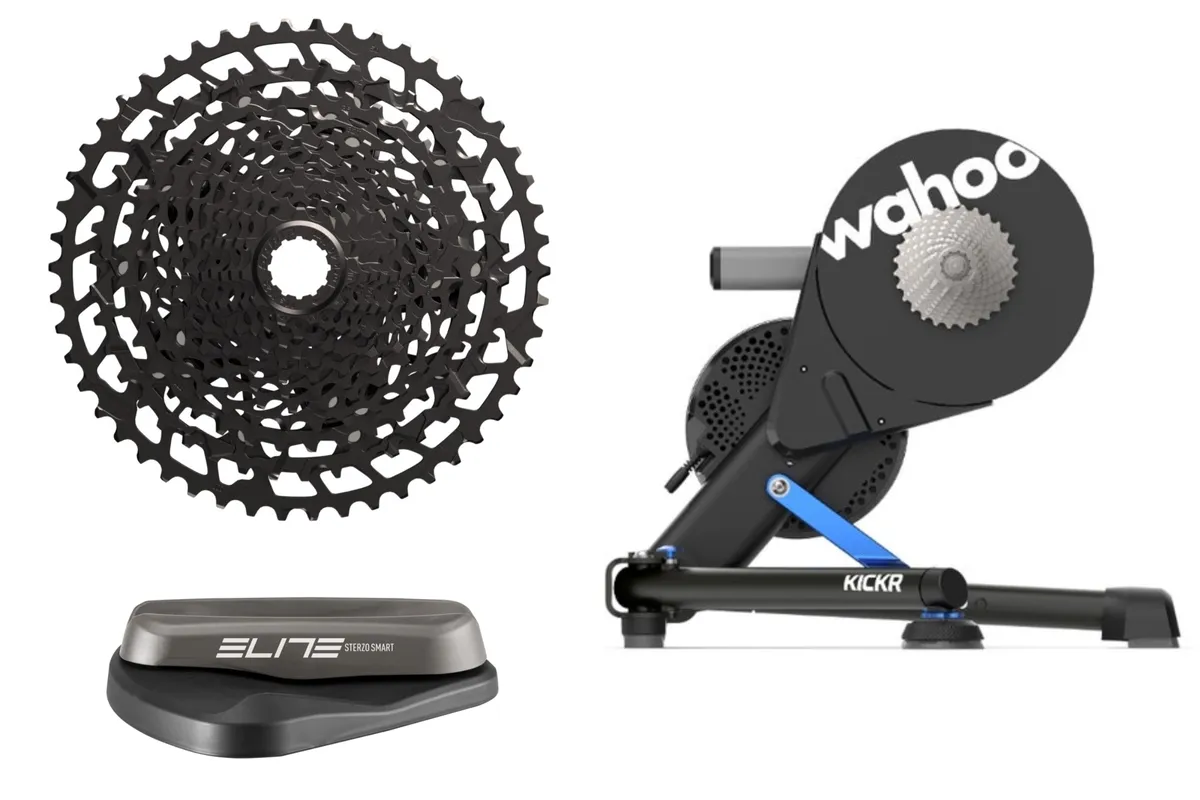
If your bike has a 12-speed drivetrain, you may need to swap the stock cassette or freehub on the trainer to make it compatible with your bike. The Zwift Cog is also compatible with mountain bike drivetrains.
Most direct-drive smart trainers, such as the Wahoo Kickr or Elite Direto XR, have compatible freehub bodies available to purchase separately, though.
A cheaper and simpler alternative to a freehub swap is to use a SRAM PG-1230 NX Eagle 12-speed cassette on the trainer.
This will fit on Shimano/SRAM 11-speed freehubs that come fitted as stock on practically every direct-drive smart trainer.
Elite’s Sterzo Smart steering platform is also perfect for getting the most out of the singletrack courses and other mountain bike events on Zwift.
Beyond that, everything else that applies for road bikes also applies here; you’ll need a decent fan and a device to play Zwift on, and somewhere to put it, such as a turbo-trainer table.
SQUIRREL_13086898
Best Zwift setup for tight spaces
Not all of us are lucky enough to have a dedicated training space. If you're tight on space, you'll want to look out for a smart trainer that can fold down between uses.
- Folding direct-drive or wheel-on smart trainer
- Phone or tablet holder
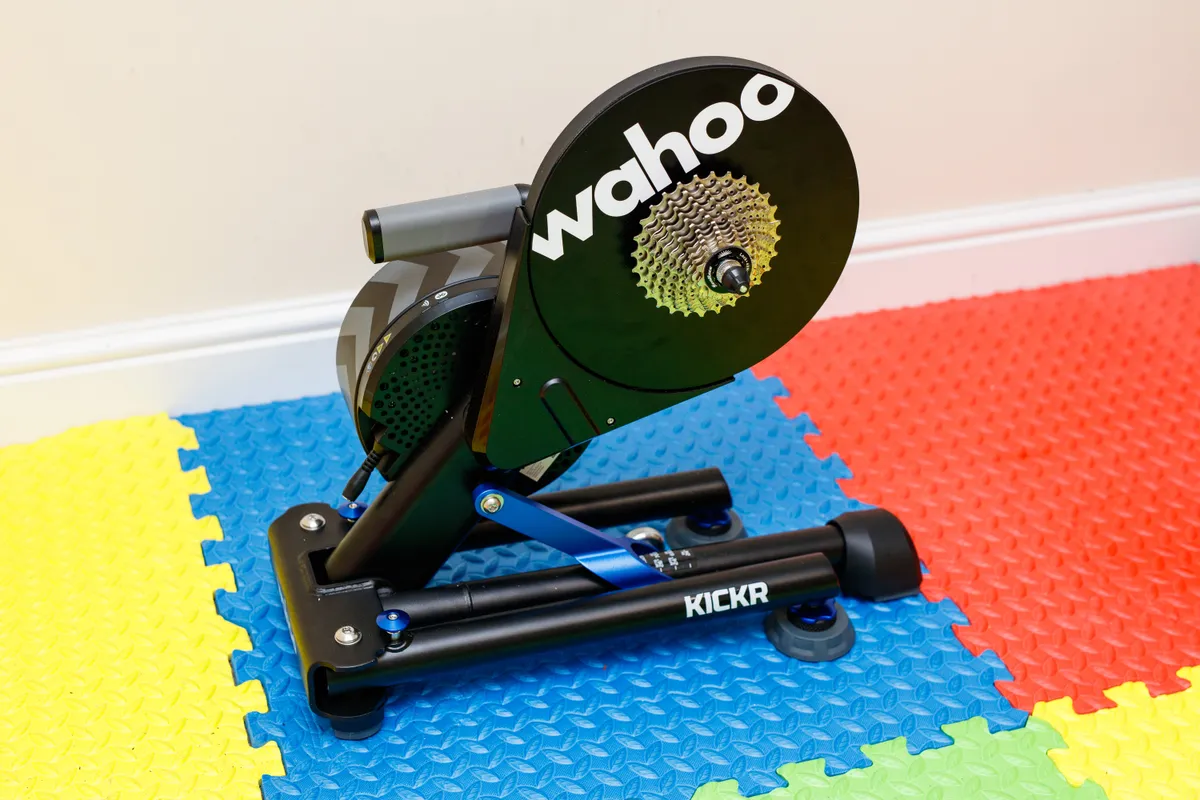
Those who are tight on space will want to look out for a smart trainer with folding legs. This significantly reduces a trainer's footprint so it can be stored away when not in use.
It's also important to opt for a quiet trainer if you live in a shared space or an apartment. Direct-drive trainers are almost always quieter than wheel-on trainers, so should be your first port of call.
If you're very tight on space, you may want to consider running Zwift on a tablet or phone mounted to your handlebar. While this won't provide quite as immersive an experience as a larger screen, you'll still get all of the benefits of interactive training.
Turbo trainer accessories for Zwift

No run-through of the best Zwift setups would be complete without touching briefly on turbo trainer accessories.
As with most things, there’s an endless array of bits and bobs you can throw money at, but there are a few things that genuinely make a difference when sweating it out on the trainer.
We’ve already covered a fan as an essential, but these are our other top picks:
- Sports towel (it's important not to drip sweat on your bike to avoid corrosion)
- Large water bottles
- Trainer mat or some form of floor protection
- Wireless headphones
- Cotton cap or sweatband


